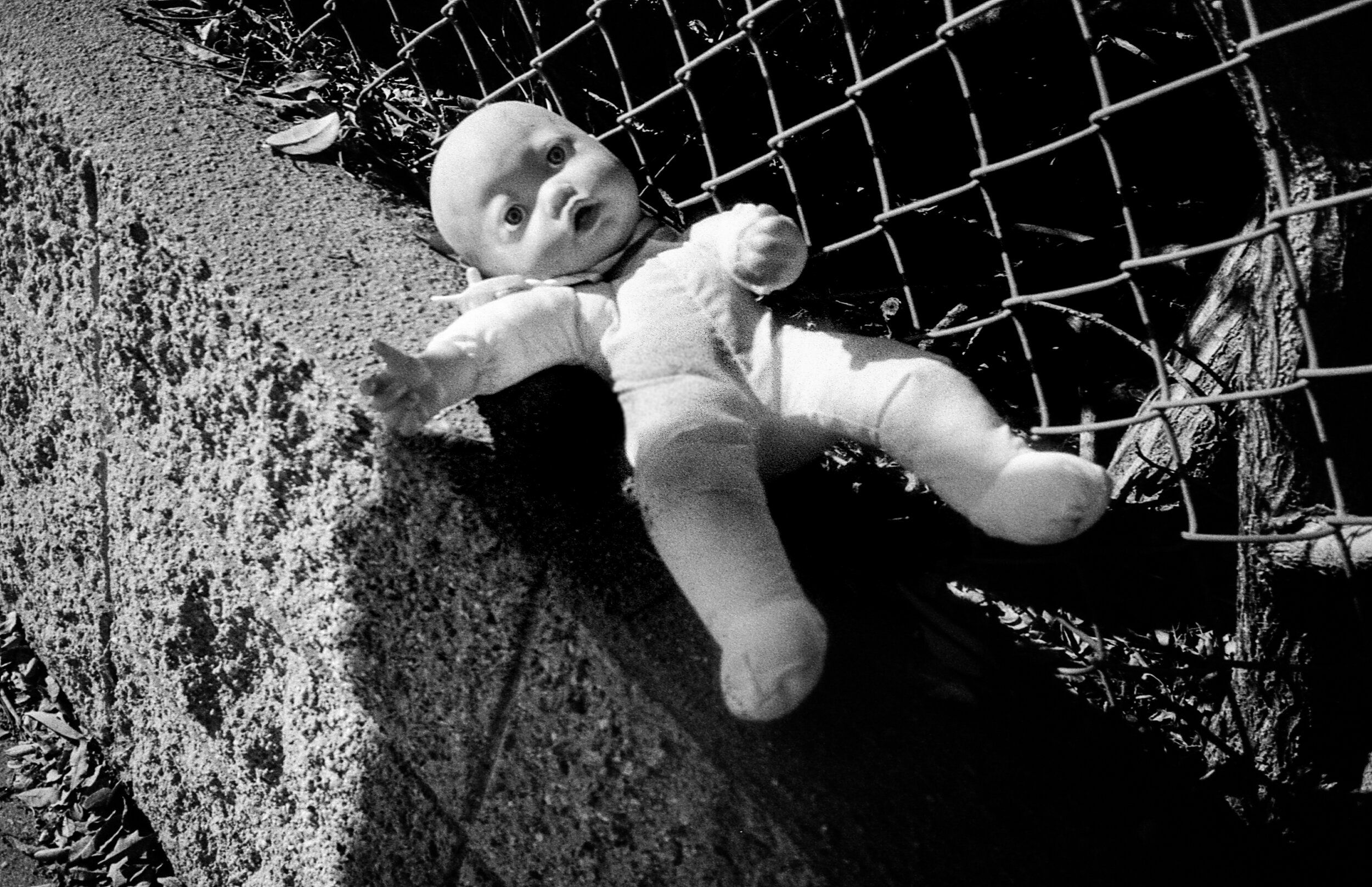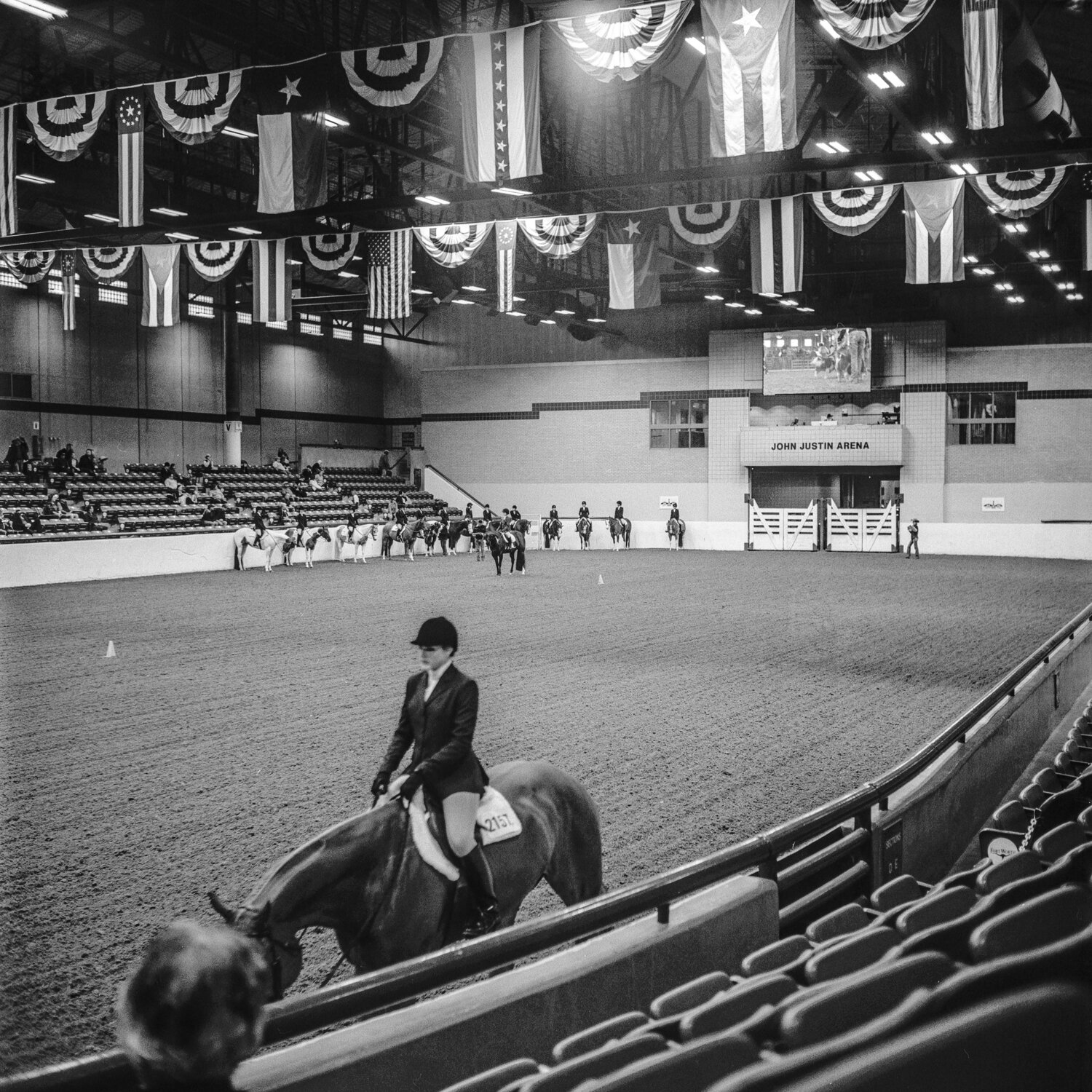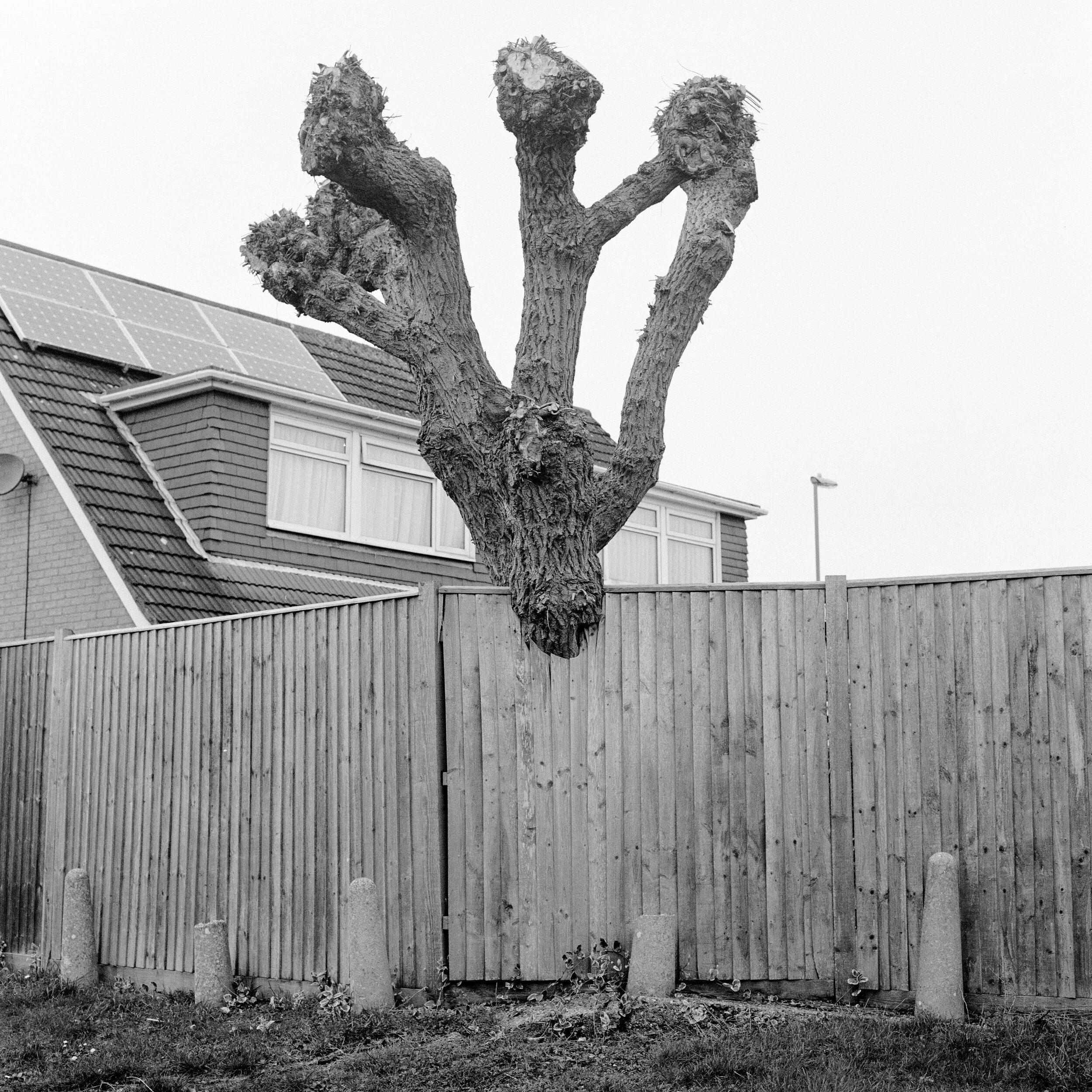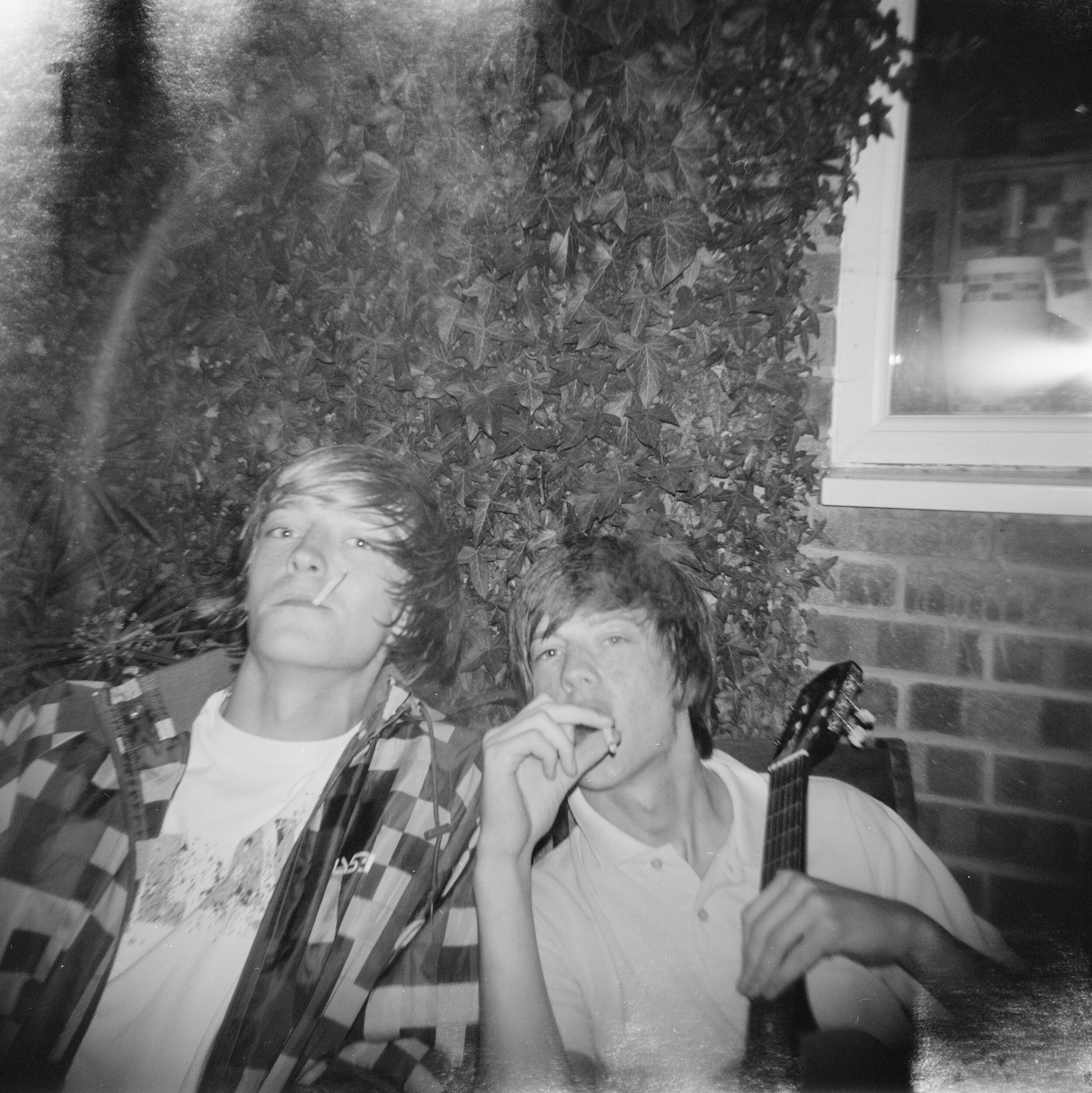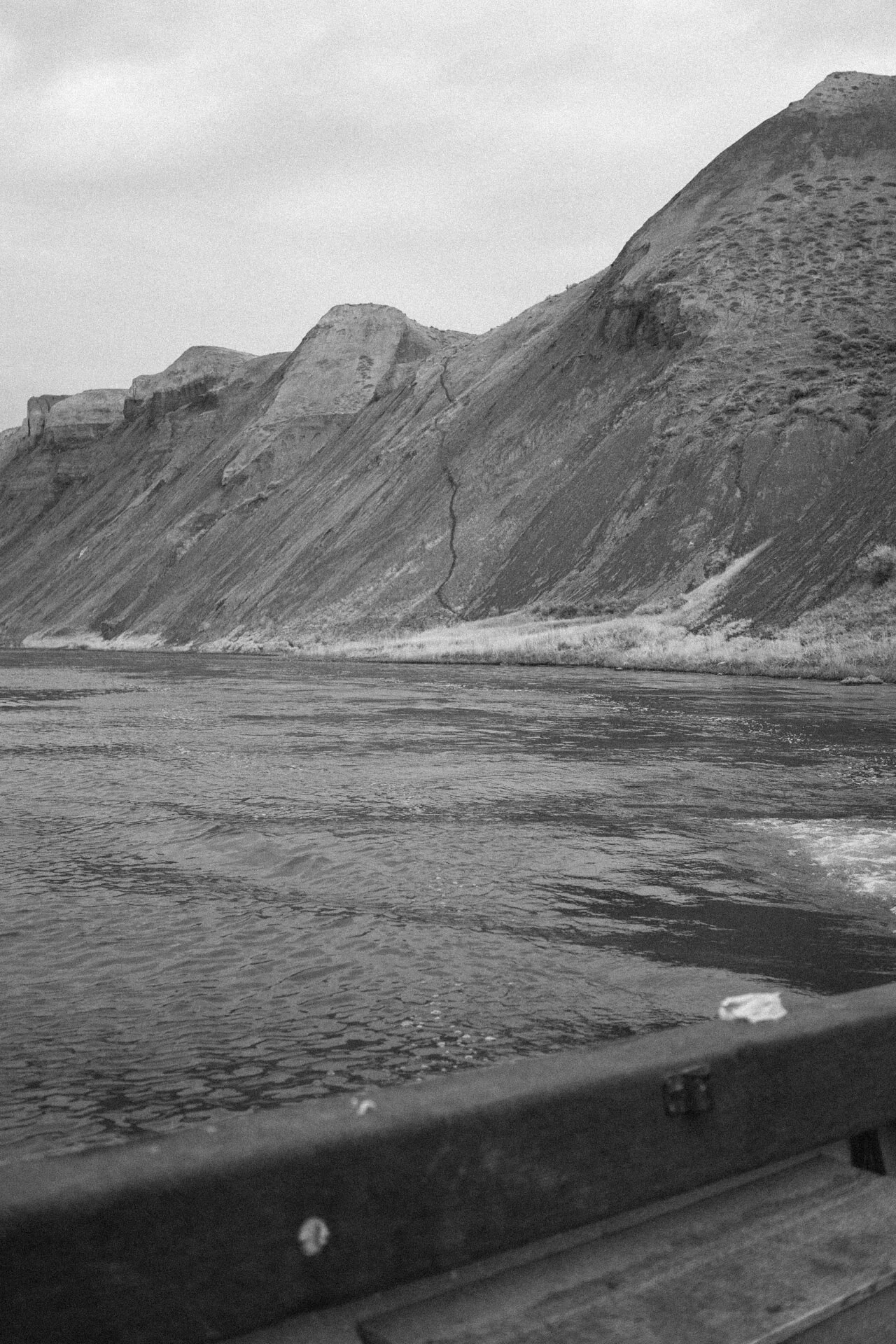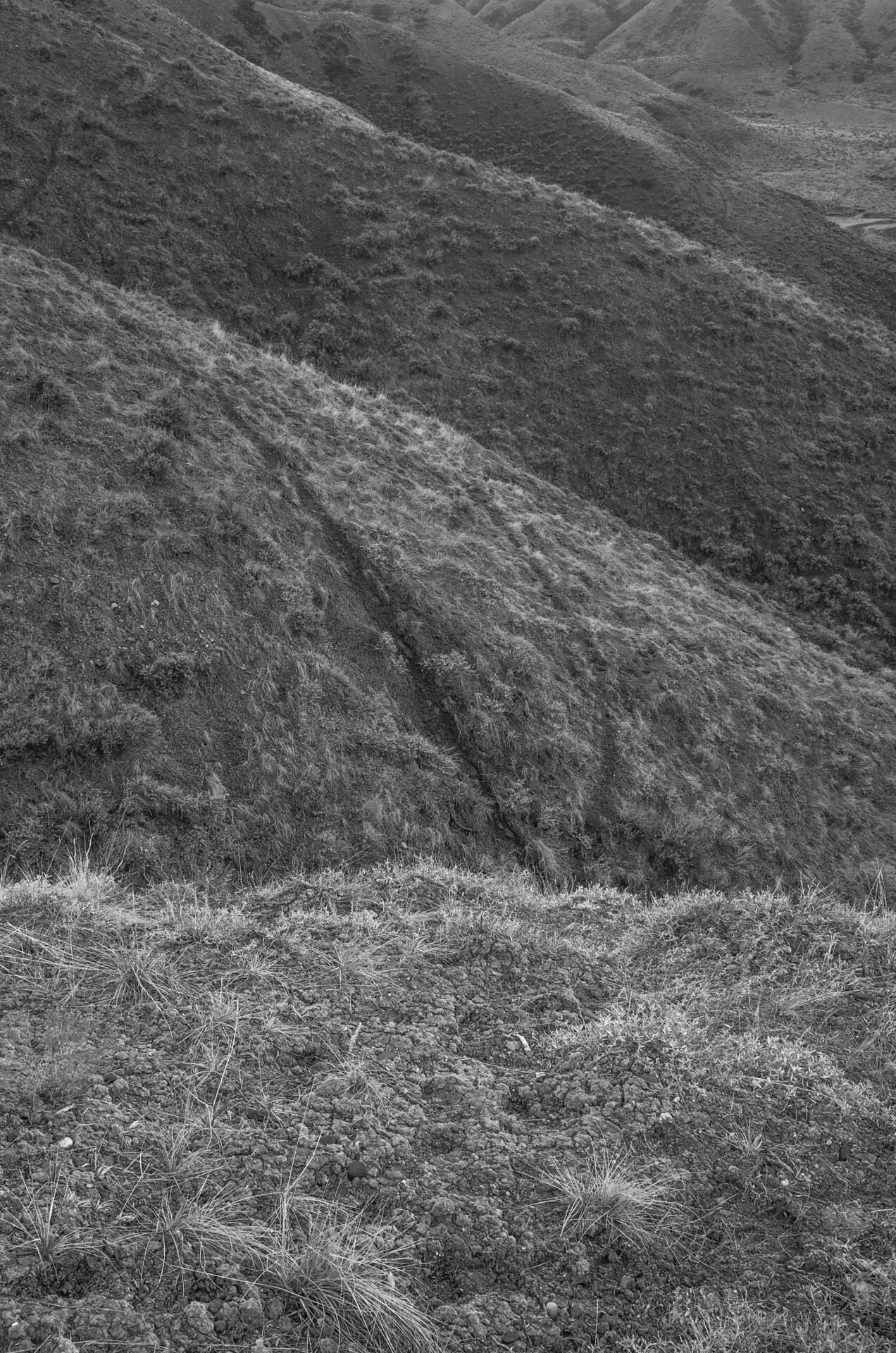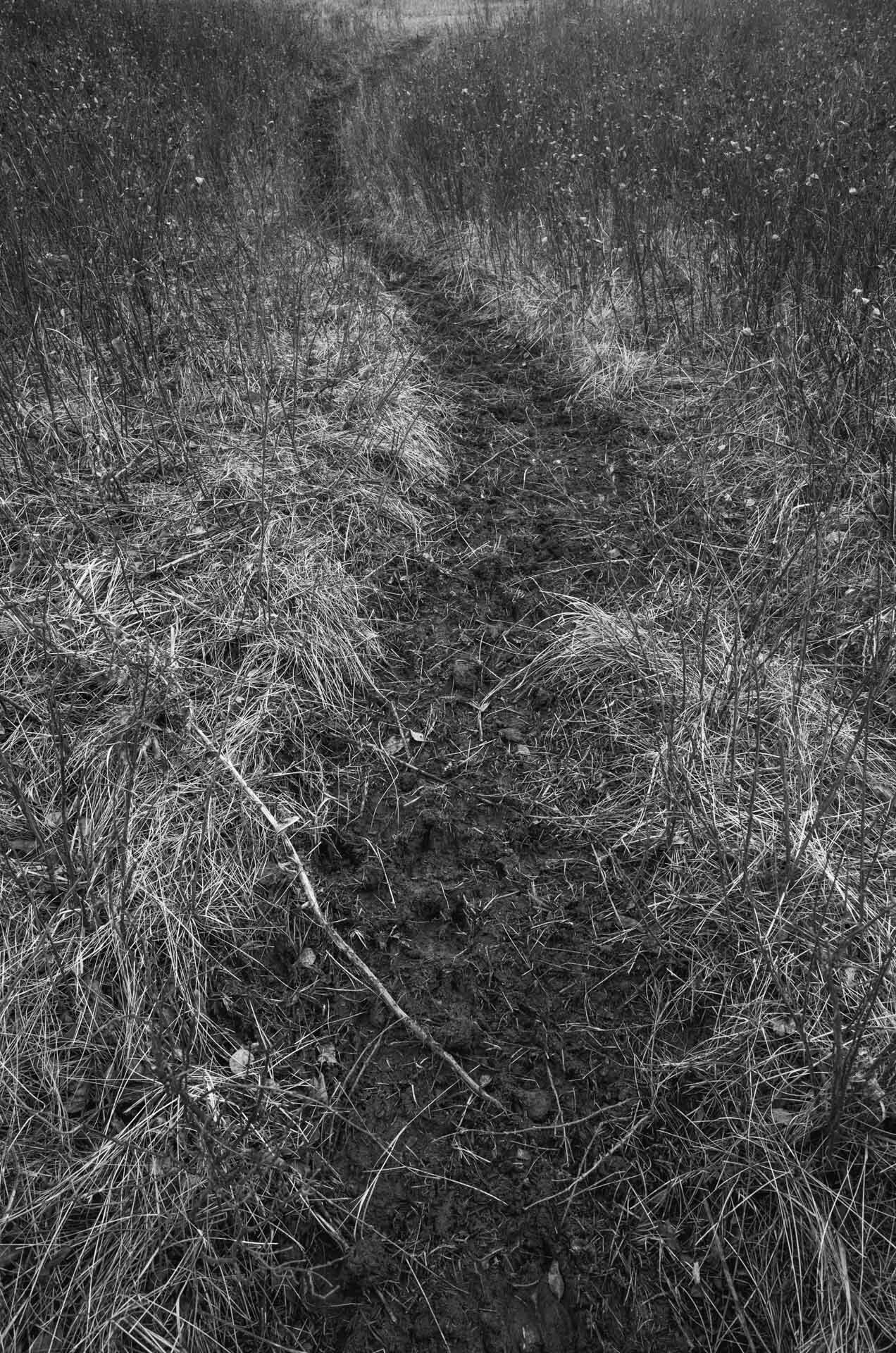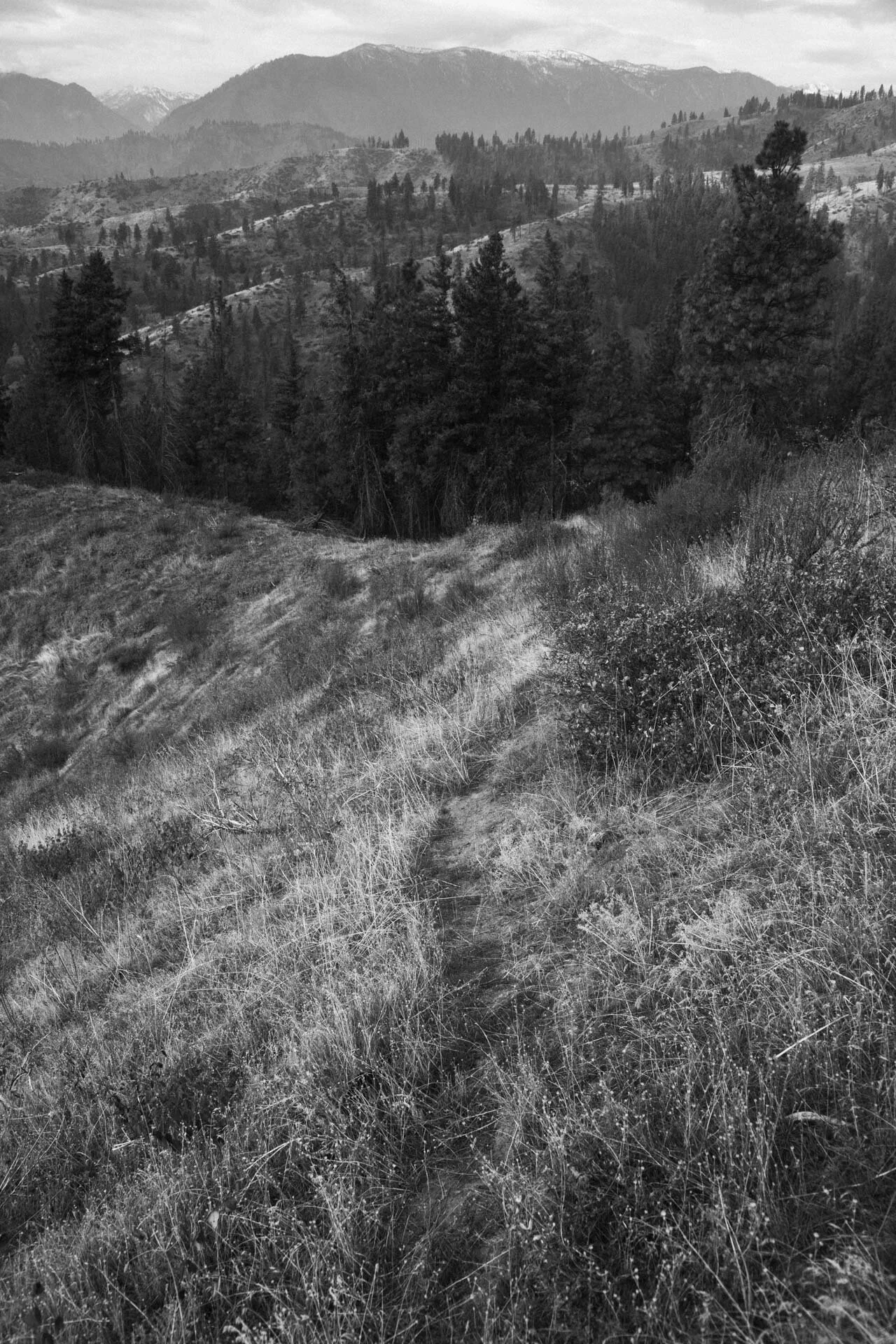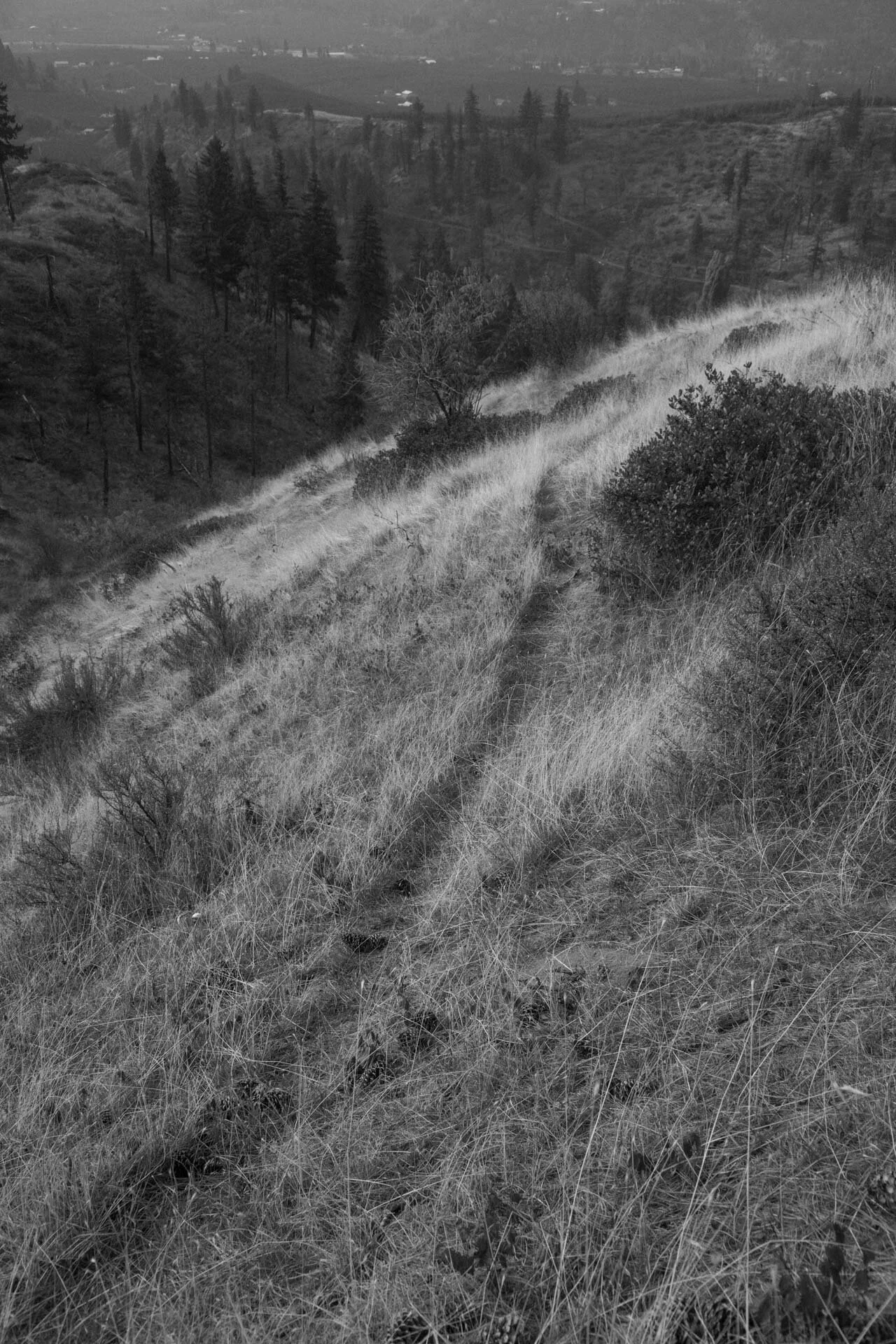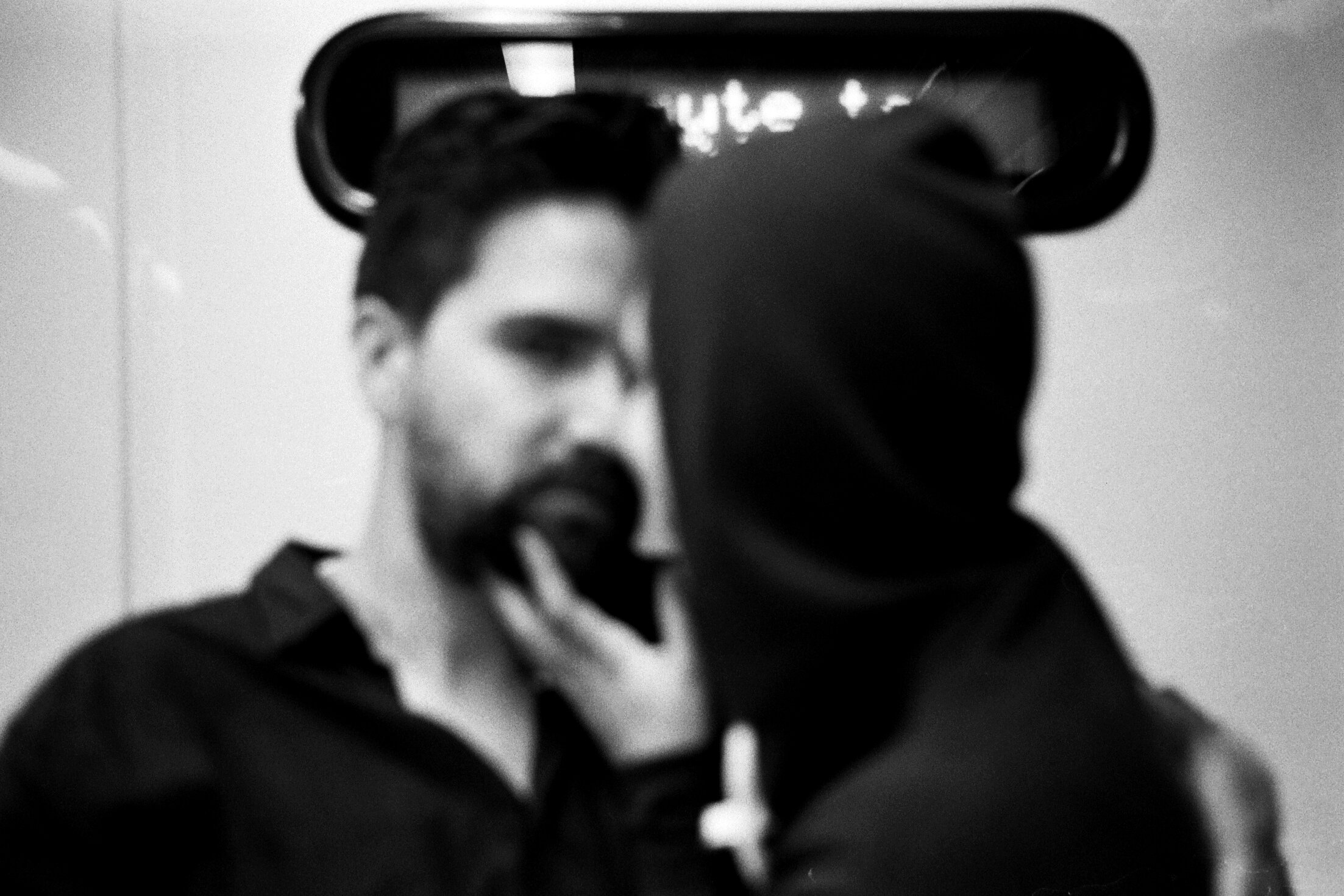Songs About Being Forgotten: Kyle J. Kohner
PC: Kyle J. Kohner
Andrew D. McClees (ADM): For those not familiar with you or your work, can you introduce yourself, and give us a brief introduction to your work?
Kyle J. Kohner (KJK): My name is Kyle Kohner; I am a 24-year-old street photographer from the LA area (La Mirada, Calif), but was born and raised in San Bernardino, CA. I picked up photography in my sophomore year in college, was hooked, and with the help of a couple of my professors and photography friends, I never looked back. I mainly do film photography, black and white 35mm to be exact. However, if I am on assignment for work, I will shoot digital. During my final semester as an undergrad, I took a darkroom photography class, and from the course came the genesis of my first body of work, a zine I've titled "Songs About Being Forgotten."
ADM: We're talking about "Songs About Being Forgotten" - where did the concept come from, and can you speak on the title?
KJK: I like to think of "Songs About Being Forgotten" as a not-yet reckoning of fear. This project's title and concept was birthed from fear and uncertainty that I've always felt but could never gauge through words alone. A fear of finality, death, and not being remembered was especially palpable during my final year of college, where years of mental illness peaked. The initial form/draft, which was created during my last semester, was a reactionary pushback to this fear. Still, I'm trying to push back against this fear, and this zine is the vehicle. I call the photos within this project "songs," mainly because music and photography meet at this very magical intersection for me. Combining the two seemed like the perfect way for me to convey this fear of being "forgotten.
PC: Kyle J. Kohner
ADM: Are there particular aesthetic considerations that you took into account while creating the project - I know the whole thing is in black and white - but is there a particular purpose behind it, and the tonality you used - I know the collage nature of the book is a nod to Phil Elverum (below).
KJK: The reasoning for doing black and white was pretty straightforward—it helps convey the impermanence of decay and things forgotten. Many of the photos are high in contrast, which renders the ephemeral themes dark and drab. As you mentioned, I wanted to give off a collage nature to the book, akin to not just Elverum, but inner sleeves and liner notes of physical music in general. With the very first iteration of this zine, the class project, I did not know much about design or sequencing. In fact, I boringly constructed it out in a simple pattern: page with lyrics, then page with photo, page with lyrics, etc. After a year or so of looking at more photo books and zines, I was able to better understand the importance of sequencing and design, which now, this version of the book compels more in comparison to my first-ever copy.
ADM: Is there a particular narrative form you used for the zine? - I noticed throughout you used some repetition and photocollages - alongside consistent written excerpts.
PC: Kyle J. Kohner
KJK: I love the concept of an album cover, yet the pressure of picking an image to capture the music inside is daunting. As mentioned a bit earlier, photography and music have always had this fascinating intersect, and the photos inside, again, are these visual songs—album covers even. The book is square, slightly bigger than a CD, and smaller than an LP or EP. Inside, I paired the images with lyrics from songs that have at some point in my life devastated me as I struggle through the concepts of finality and the high likelihood that what I say or create now won't matter 70 years from now. The visual layout, in fact, was largely influenced by the visual work of singer-songwriter Phil Elverum, aka The Microphones, aka Mount Eerie. I love how Elverum designs and incorporates his photography with his music. If you check out his latest album (which is just one long song) on YouTube, you'll see that it's just Phil laying down photos he's taken over the years, one-by-one, to reflect his journey as a musical artist over the past two decades. But he's also thoughtful when designing the album art for his LP's and CD's, inside and out. With most of his projects, he sprawls handwritten lyrics across a collage of photos. His design for The Microphones 2001 album "The Glow Pt. 2" particularly sparked that of my collection of photographs. I'd love to explain the sequencing and narrative, but I'm also a believer that we can create our own stories from photos within a body of work, separate from the artist's intentions, by merely perceiving them. So I'd rather have viewers of the zine to figure it out for themselves.
ADM: From that - what would you say the most essential images are to understanding the project are - what songs did you pair them with, and why?
PC: Kyle J. Kohner
KJK: This one is hard to answer as I tried not to pin the weight of this project on one photo because I try not to shoot with a mindset of capturing the best singular image or that "decisive moment." But if any, I believe the images of charred buildings speak to me and the project the loudest. These two photos were the genesis behind this project, and I was able to pair it with a song that I felt best captured to the idea of "being forgotten." The track that particularly called out to me—and I hesitate to mention it—was "Carissa" by Sun Kil Moon (Mark Kozelek). On the track, he sings of his second cousin Carissa who died in an improbable housefire. She was a regular blue-collar individual living in the midwest, and Mark barely knew her. And yet, despite how menial her life seemingly was, he wanted to impress meaning upon her life, long passed her death, with this song. I find this most beautiful and admirable. After including this song in my book (paired with these two photos), it came to light that Kozelek is a fucking creep and an abuser. I almost expunged the track from my zine, but then the final product would have been unauthentic and merely reactionary to what had happened. Though I have since removed his music from my life, I cannot deny the impact this song had on me. I would probably point to the image of shoes hanging from the telephone wire as my favorite. It's a bit cliche, but I love how the shoes are still emphasized even when crowded by the bushy textures beneath.
PC: Kyle J. Kohner
ADM: What do you think the biggest advancements you made were over the course of the project? in terms of sequencing, and also shooting?
KJK: As someone who studied journalism in college, I once held to this idea that I MUST be clear as possible for the sake of my audience. Heck, this level of transparency is and should be applied for a lot of photojournalistic work because vagueness is a sign of an untrustworthy author. But with this project, especially regarding the sequencing, I had to reorient my learned approach to create something more personal and trusting of my audience, instead. I've always feared being misunderstood and not being clear, yet the way I've sequenced and even shot the photos for this zine was a way for me to give that fear up. So I'd say the most significant advancement I experienced through this project was the willingness to trust my audience and trust that the photos would convey more words than I could.
ADM: What was your collaborative process like? Prior to the interview you'd mentioned working with Max Heilman and Brooks Ginnan.
KJK: This project is much more than the zine itself. In fact, I paired it with a split single—two original songs. One track titled "Stream Of Silhouettes" is a super atmospheric piece of post-rock, written and performed by Maxwell Heilman and his band Anhelar. The other is a raw, emotively lo-fi cut titled "The Devil Inside of Me," written and performed by Brooks Ginnan. Aside from being a musician, Brooks also happens to be an up-and-coming model featured in films, music videos, and even in Vogue Italia. Though the songs are two entirely different worlds—one brooding, layered, and room-filling and the other stripped-down, haunting, and intimate—they share the same desperate spirit that yearns through affliction. I've known both Brooks and Max for six years. Because I've stayed connected with them longer than any other friends, they are sort of this antithesis to the idea of being forgotten. They represent laughter, love, and long-lasting memories—things that push back against the danger of being forgotten. Because of this friendship, I had to include them within this project. To best capture the zine's essence, I sent PDF copies to the two of them, and they provided me music they felt best reflected what they viewed. "Songs About Being Forgotten" is the fruit of this collaboration.
PC: Kyle J. Kohner
ADM: Was there a specific turning point that pushed you to print the zine up and put it out there, publicly?
I think like many people who have created and released some artwork lately, the pandemic really pushed me to buckle down and say hey," let's get this done finally." If there ever was a time to release something into the world, now was the time. It was an opportunity to take what has been a disadvantageous moment in history for everyone, make something beautiful out of it, and collaborate with other brilliant minds. No, I wouldn't call this my "COVID Zine/book," as this photo project has been in the making for almost two years. However, I'm sure we will be seeing a saturation of COVID-related projects from photographers within the next year, haha.
ADM: You've talked about musical influences (though feel free to add more if you'd like) but are there any other visual or photographic influences on the zine?
KJK: Studying journalism in college, I took a few photojournalism courses. The professor who taught all of them wanted us, students, to learn from the greats, sequentially. I loved this approach because it allowed our photographically naive eyes to appreciate the trailblazers of street photography. That said, one of my earliest inspirations was Elliot Erwitt. People point to him and notice the humor and irony in his work (which I always try to draw from), but he inspires me because his pictures are emotion(s) rather than reflective of emotion(s). (Which in fact, he is quoted saying, "I want pictures that are emotion.") I picked the photos I did for this zine for the same reason—I wanted to curate images that are what they feel like. I can also pinpoint three current favorites of mine—some more known than others. As of recent, Charalampos Kydonakis, aka Dirty Harry, is the first that comes to mind. His photos literally jump at you with an uncanny energy. He has an unparalleled ability to capture the oddities of life in all of its mundanity, so beautifully. His work is so surreal and is so incredibly impressive because of it. The second photographer is Dylan Hausthor. Though his photos are clearly tethered to a specific place that my own photography is not familiar with, his work has a spiritual and mythical quality that I aspire to channel with my own (though my attempts do not hold a flame to the magic Dylan captures). His use of light is also unlike anything I've seen from another photographer, especially when illuminating the organic textures a place [like] Maine lends itself to. There are many more photographers and their work I enjoy right now, and I'd love to mention them all.
PC: Kyle J. Kohner
ADM: What advice do you have for someone taking a pre-existing project (like the one you made in class) and refining it or repurposing it like you did (ie turning it into a collaboration, and a multimedia project)?
KJK: My advice to someone who wants to take a pre-existing project and refining it/repurposing it, is to simply be honest with yourself. I think one of the most horrible yet beautiful things about creating art is looking back at the things you DID. Almost always, for me at least, I writhe in disgust over photos I took even as early as three months ago. But being able to look at your older material and critique it with honesty will allow you to tap into what you truly want to create. For this project, I carried over about half the material from the very first version because I hated everything else in it—though I thought it was the best damn thing when I first put the zine together, haha. But my advice is best served as a double-edged sword. I think that though one needs to be honest with themself, they also need to trust their work and build up the courage to publish that zine, book, series of prints, or whatever they are working on. There comes a point where if you keep waiting, you'll never be satisfied with what you create. Thankfully, I just missed that exit and was able to just say, "Fuck it." For me, that point came with the desire to bring in people I love and cherish into the fold to make it a gratifying experience.
PC: Kyle J. Kohner
ADM: From Stefan Byrom: Which photographers/artists out there do you admire other than the more well known ones?
KJK: I want to mention Justin Yun. Though he happens to be one of my best friends, I, along with many others in the photo community, would agree he possesses a rare talent for his age. Unfortunately, he tends to keep to himself and remains reserved when putting his work out there. There are countless photographers out there who try to explore the concept of dreams and memories. But no one is as in-touch with these ideas and how to artfully reflect them than Justin. The way he can tap into these dreams and memories has helped inform my ability to go into my own subconscious to take photos that, again, "are emotion."
ADM: What question do you have for the next photographer? - you can answer it yourself if you'd like.
KJK: Outside of other photographers and photobooks, where do you find inspiration for your own photography?
ADM: Thanks again for doing the interview! Any parting words or advice? Where can we pick up a copy of the zine?
KJK: Bring your camera with you at ALL times. If you don't like carrying one around, get a point-and-shoot for casual outings and errands. Support your photography friends. Love one another as yourself; you'll be a lot happier than you could be, I promise. Always be fighting injustice in the world. No matter how small or big the gesture—it adds up—not toward points, but a better world around for those who are disadvantaged. Listen to new music—always. The world needs escaping sometimes, and music is the perfect way to flee.
If you find yourself interested, you can purchase my zine at kylekohner.com/shop and can check out more of my work there as well.
